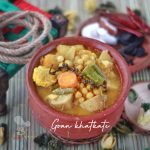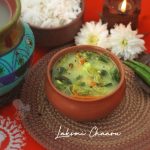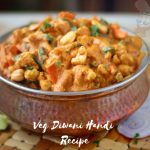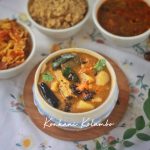Take a stroll along the streets of Bengal and get a pack of colorful crunchy Jalmuri and slowly enjoy every bit of it while looking around the busy noisy shops, the colorful savories, the mouth-watering sweets and the aromatic chai. Experience the joy of jalmuri from the streets of Bengal that have authentic tales to tell from the past era including its gastronomic journey...
" Jhalmuri is a seamless fusion of multiple ingredients and mixed flavors that comes with a nutritional punch and earthy flavor".
Table Of Contents
1. Jhalmuri
2. A Look Into Bengali Street Food
3. A Preview On Jhalmuri
4. Origin And Gastronomic Journey Of Jhalmuri
5. Popularity And Its Prevalence In Bengal
6. Health Benefits Of Jhalmuri
7. Needed Ingredients To Make Jhalmuri
8. Step wise Directions To Make Jhalmuri
9. Nutritional Value
10. Points To Ponder
11. Faqs
12. Jhalmuri- A Note
13. Tantalizing Toppings For Jhalmuri
14. Suitable Trimmings For Jhalmuri
15. Dainty Drinks To Have Along With Jhalmuri
16. Alluring Ambience To Enjoy This Simple Yet Stunning Chaat From Bengal
17. Takeaway
Jhalmuri is a popular street food in Bengal made from puffed rice, vegetables, spices, and sometimes meat. It is a flavorful and crunchy snack that is easy to make and enjoyed by many.
A Look Into Bengali Street Food:
Bengali street food is a vibrant and diverse culinary experience that showcases the unique flavors and textures of the region. The street food scene in Bengal is known for its delicious and affordable snacks that are perfect for on-the-go eating. Some of the most popular Bengali street foods include jhalmuri, a spicy snack made from puffed rice and spices, phuchka, which are small, crispy, hollow puris filled with spicy potato mixture and tangy tamarind water, and kati rolls, which are flat breads stuffed with a variety of fillings such as chicken, beef, or paneer. These dishes are often accompanied by chutneys, pickles, and spicy sauces that add an extra burst of flavor. Bengali street food is a must-try for anyone visiting the region, and it's a great way to experience the local culture and cuisine.
A Preview On Jalmuri:
Bengali cuisine is known for its flavorful and spicy street food, and one of the most popular items in this category is "chaat." Chaat is a Hindi term that refers to a range of savory snacks, typically sold at street-side stalls or food carts.
One of the most famous Bengali chaat items is "jhalmuri." Jhalmuri is a spicy and tangy snack made from puffed rice, chopped vegetables, and a variety of spices. The dish is often served in a paper cone, and it is commonly eaten as a quick and satisfying snack on the go. To make jhalmuri, vendors typically start with a base of puffed rice and then add chopped onions, tomatoes, coriander leaves, and green chilies. They then season the mixture with a blend of spices, including cumin powder, chili powder, and salt. Finally, the jhalmuri is finished with a drizzle of tamarind chutney and a squeeze of lime juice.
Jhalmuri is a popular and affordable snack in Bengali cuisine, and it is enjoyed by people of all ages. Its spicy and tangy flavors make it a perfect snack for those who enjoy bold and vibrant flavors. Whether you are strolling through the streets of Kolkata or simply looking to try something new, jhalmuri is a must-try dish for any food lover.
Origin And Gastronomic Journey Of Jhalmuri:
Jhalmuri is a beloved street food that originated in the Indian subcontinent, specifically in the eastern region of Bengal, which is now divided between Bangladesh and the Indian state of West Bengal. The dish has a long and interesting gastronomic journey that reflects the cultural and historical influences of the region. The earliest form of jhalmuri can be traced back to the mid-19th century, where it was known as "muri ghonto" or "murighonto" in Bengali. This dish was a combination of soaked puffed rice and a variety of vegetables, typically served during special occasions such as weddings or festivals.
Over time, the dish evolved to become what we now know as jhalmuri, which is characterized by its spicy and tangy flavors. The word "jhalmuri" itself is a combination of two Bengali words: "jal," which means water, and "muri," which means puffed rice. The name is a nod to the fact that the dish is made with puffed rice, which is soaked in water before being seasoned with spices and chutney. Jhalmuri's popularity grew in the 20th century, as it became a favorite snack among the working class and students in Kolkata and other parts of Bengal. It is now sold by street vendors and in small shops throughout the region, where it is enjoyed as a quick and tasty snack on the go.
Today, jhalmuri is not only a popular snack in Bengal but has also gained recognition across India and in other parts of the world. Its unique blend of flavors, textures, and spices have made it a beloved dish that represents the rich culinary heritage of the region.
Popularity And Its Prevalence In Bengal:
Jhalmuri is an extremely popular street food in Bengal, enjoyed by people of all ages and backgrounds. It is a ubiquitous snack that can be found in almost every street corner, food cart, and small shop throughout the region. Jhalmuri is particularly popular in Kolkata, the capital city of West Bengal, where it is sold in large quantities every day. One of the reasons for jhalmuri's popularity is its affordability. It is a cheap and filling snack that can be enjoyed by people from all economic backgrounds. In addition, its spicy and tangy flavors are very appealing to the Bengali palate, which favors bold and complex tastes.
Jhalmuri is also an important part of Bengali culture and tradition. It is commonly served at social gatherings, such as weddings and festivals, and is often prepared at home as well. Many families have their own unique recipe for jhalmuri, which is passed down from generation to generation. Apart from its popularity in Bengal, jhalmuri has also gained recognition across India and other parts of the world. It is now commonly found in other Indian cities and is also sold in some South Asian grocery stores in the United States and other countries. Overall, jhalmuri's widespread availability and popularity reflect its significance as a beloved snack that represents the rich culinary heritage of Bengal.
Health Benefits Of Jhalmuri:
Jhalmuri, being a snack made primarily of puffed rice, vegetables, and spices, can have some potential health benefits, including:
Low in calories: Jhalmuri is a low-calorie snack, making it an excellent option for those who are watching their weight. The puffed rice used in jhalmuri is low in calories and high in fiber, which can help you feel full and satisfied for longer.
Rich in nutrients: Jhalmuri contains a variety of vegetables, including onions, tomatoes, and coriander, which are all rich in vitamins and minerals. These nutrients can help boost your immune system, improve digestion, and promote overall health and well being.
Antioxidant properties: Many of the spices used in jhalmuri, such as cumin and coriander, have antioxidant properties. These antioxidants can help protect your body from damage caused by harmful molecules called free radicals, which can contribute to chronic diseases such as cancer and heart disease.
Promotes hydration: Jhalmuri is typically served with a drizzle of tamarind chutney and a squeeze of lime juice, both of which can help promote hydration. Staying hydrated is essential for maintaining optimal health, as it helps regulate body temperature, transport nutrients throughout the body, and support the functioning of organs and tissues.
Here comes the easy recipe of Jhalmuri that can be made with available ingredients at home in a jiffy...
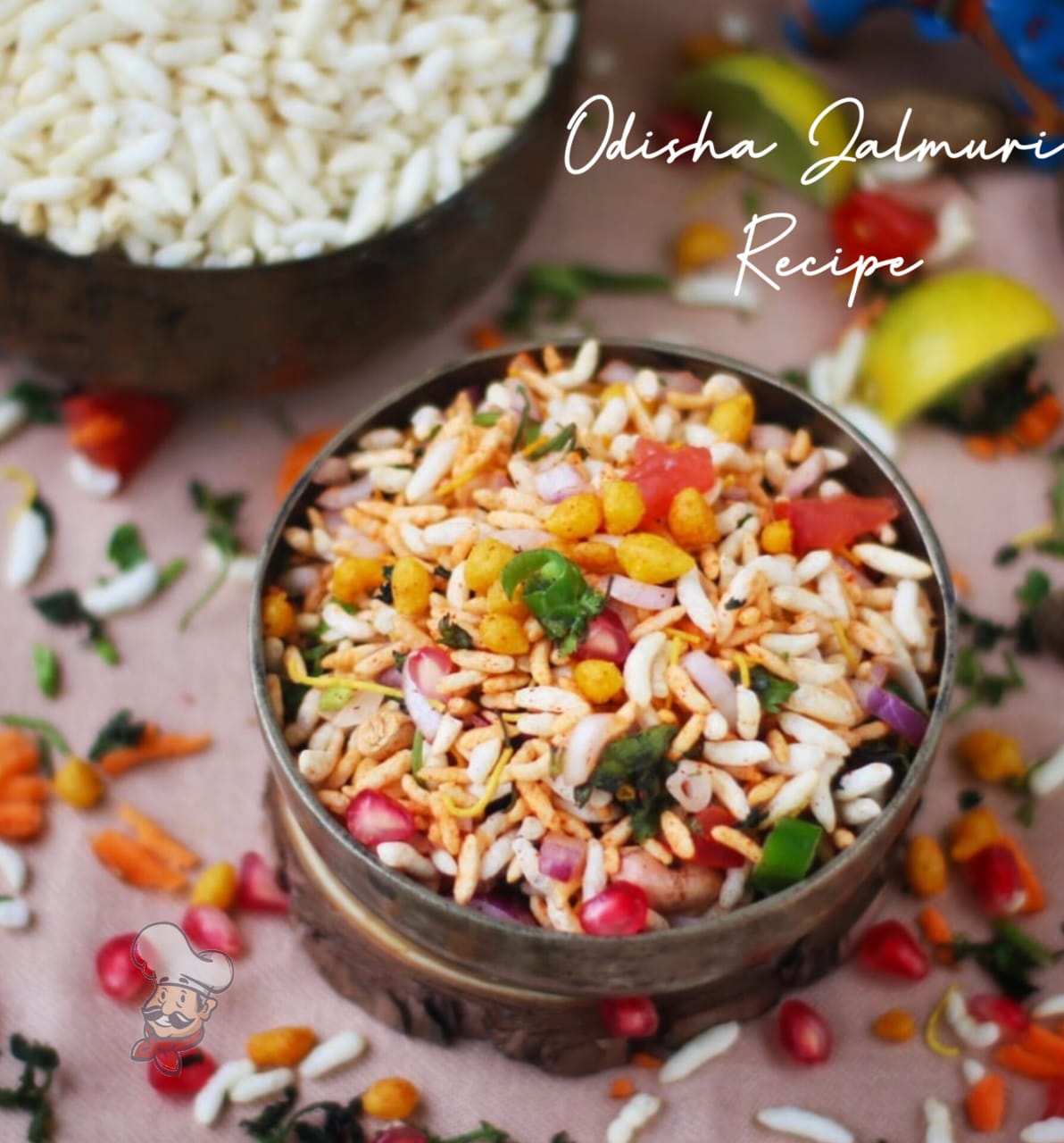
Needed Ingredients To Make Jalmuri:
- Puffed rice: The main ingredient, providing a crispy and airy texture to the dish.
- Vegetables: Usually diced onions, tomatoes, cucumbers, and green chilies are added for freshness and crunchiness.
- Spices: Mustard oil, cumin powder, coriander powder, chili powder, and turmeric are mixed together to create a tangy and savory flavor.
- Peanuts (optional): Roasted peanuts can be added for a nutty flavor and added crunch.
- Lemon Juice- Added to give a tangy flavor for jhalmuri.
Step wise Directions To Make Jhalmuri:
In a large mixing bowl, combine the puffed rice, chopped onion, tomato, green chili, and roasted peanuts.
Add the chopped coriander leaves, lemon juice, roasted cumin powder, red chili powder, and salt to taste. Mix well with a little oil to combine all the ingredients.
Taste the jhalmuri and adjust the seasoning as needed.
Serve immediately in small bowls or paper cones, garnished with additional coriander leaves and roasted peanuts, if desired.
Points To Ponder:
- For a spicier jhalmuri, add more green chilies or red chili powder.
- You can also add grated coconut, chopped cucumber, or boiled potato to the jhalmuri mixture for added flavor and texture.
- Some people also like to add tamarind chutney or mint chutney to their jhalmuri for extra tangy taste.
Fresh vegetables and spices will give your jhalmuri the best flavor and nutritional value. Make sure to use fresh ingredients and avoid using un firm or old items.
To enhance the flavor of the puffed rice, it's a good idea to toast it in a dry pan or oven for a few minutes before adding it to your jhalmuri mixture.
Spices are an important component of jhalmuri, but it's important to use them in moderation. Too much spice can overpower the other flavors and make your jhalmuri too spicy for some people. Start with small amounts and adjust the seasoning as needed.
While some oil is necessary to sauté the vegetables and spices, it's important to use it in moderation. Too much oil can make your jhalmuri greasy and unhealthy.
If you have leftover jhalmuri, store it in an airtight container to keep it fresh. This will also help prevent the puffed rice from getting stale or soggy.
Faqs:
Is jhalmuri vegetarian/vegan?
Yes, jhalmuri is a vegetarian and vegan snack as it contains no animal products.
Is jhalmuri healthy?
Jhalmuri can be a healthy snack option as it contains vegetables, spices, and puffed rice, which are all low in calories and high in nutrients. However, some jhalmuri preparations may contain added salt, sugar, or fried snacks, which can make it less healthy.
Is jalmuri gluten-free?
Jhalmuri can be gluten-free if the puffed rice used in the recipe is gluten-free. However, some jhalmuri preparations may contain wheat or other gluten-containing ingredients, so it's important to check the ingredients before consuming it.
How is jhalmuri served?
Jhalmuri is typically served in a paper or plastic cup, and can be eaten with a spoon or directly from the cup. It is often served as a street food snack in India and Bangladesh.
Jhalmuri: A Note
Nature: Jhalmuri is a dry snack with a crispy and crunchy texture.
Color: The color of jhalmuri depends on the ingredients used, but it typically has a mix of green, yellow, and red colors due to the vegetables and spices.
Texture: Jhalmuri has a unique texture that is a combination of crispy, crunchy, and chewy. The puffed rice gives it a light and airy texture, while the vegetables and peanuts add a satisfying crunch.
Flavor: Jhalmuri has a complex and flavorful taste due to the mix of spices and vegetables used in the recipe. It has a tangy, spicy, and slightly sweet taste that is balanced with the natural flavor of the puffed rice.
Taste: The taste of jhalmuri can vary depending on the ingredients used and the spiciness level. It has a tangy, savory, and spicy taste that is sure to tantalize your taste buds.
Consistency: Jhalmuri has a loose and dry consistency, with the puffed rice and vegetables loosely mixed together. The consistency may vary depending on the ratio of ingredients used in the recipe.
Tantalizing Toppings For Jhalmuri:
Jhalmuri is a versatile snack that can be customized with a variety of toppings to suit different tastes. Some popular toppings for jhalmuri include:
- Sev or bhujia: These crispy noodles made from chickpea flour add extra texture and crunch to the dish.
- Chopped coriander leaves: Fresh cilantro adds a bright, herbaceous flavor that complements the spice and tanginess of the jhalmuri.
- Chopped mint leaves: Mint leaves can provide a cooling and refreshing element to balance the heat of the spices.
- Pomegranate seeds: These juicy and sweet seeds add a burst of fruity flavor that can balance out the savory and spicy flavors of the jhalmuri.
- Sliced boiled eggs: Adding sliced boiled eggs to jhalmuri can increase the protein content of the snack and make it more filling.
Suitable Trimmings For Jalmuri:
Chutneys: Tamarind chutney, mint chutney, and coriander chutney are popular accompaniments for jhalmuri. They add a tangy and slightly sweet flavor to the snack.
Lemon or Lime Juice: Squeezing a little lemon or lime juice on top of jhalmuri adds a refreshing and tangy taste to the snack.
Fried Snacks: Some people like to add fried snacks such as sev, bhujia, or boondi to jhalmuri for extra crunch and flavor.
Yogurt: Adding a dollop of yogurt to jhalmuri can help balance out the spiciness and add a creamy texture to the snack.
Vegetables: Jhalmuri is often served with chopped tomatoes, onions, and green chilies on top. They add a fresh and crunchy texture to the snack.
Dainty Drinks To Have Along With Jalmuri:
Jhalmuri is a flavorful and spicy snack that pairs well with a variety of beverages. Traditionally, jhalmuri is enjoyed with tea, particularly black tea with a dash of milk and sugar. However, other popular options include fresh lime soda or lemonade, which help to cut through the spice and refresh the palate. Additionally, some people prefer to pair jhalmuri with lassi, a yogurt-based drink that can also help to cool the mouth after eating spicy food. Ultimately, the choice of beverage will depend on personal preference and availability, but any of these options can complement the flavors of jhalmuri quite well.
Alluring Ambience To Enjoy This Simple Yet Stunning Chaat From Bengal:
Jhalmuri is typically enjoyed as a street food snack in India and Bangladesh, and it can be enjoyed in a variety of settings. Here are some alluring ambience to enjoy jhalmuri:
Street-side food stalls: Jhalmuri is often sold at street-side food stalls, which provide a vibrant and lively atmosphere. The hustle and bustle of the street, the aroma of the food, and the sound of vendors shouting can add to the experience of enjoying jhalmuri.
Beaches or Parks: Jhalmuri can be enjoyed in a relaxing outdoor setting such as a beach or park. The fresh air and natural surroundings can enhance the enjoyment of the snack.
Cultural Festivals: Jhalmuri is often sold at cultural festivals, such as Durga Puja or Holi. The colorful decorations, traditional music, and lively atmosphere can add to the experience of enjoying jhalmuri.
- Local Markets: Many local markets in India and Bangladesh sell jhalmuri, and enjoying it in this setting can be an exciting and immersive experience. The sights, sounds, and smells of the market can add to the enjoyment of the snack.
Traditional Bengali Homes: In Bengal, jhalmuri is often enjoyed in the comfort of one's home with friends and family. The warm and welcoming atmosphere of a traditional Bengali home can provide the perfect ambience for enjoying jhalmuri.
- Overall, the ambience for enjoying jhalmuri depends on personal preferences and can vary from a lively street-side stall to a relaxing outdoor setting or a traditional Bengali home.
Takeaway:
Bengali jhalmuri is truly a delightful snack that offers a burst of flavor and texture with every bite. The combination of puffed rice, vegetables, spices, and optional meat and peanuts creates a savory and spicy snack that is both satisfying and delicious.
What makes jhalmuri even more special is its versatility and adaptability, allowing for a wide range of toppings and variations that can be tailored to individual tastes. Whether enjoyed as a quick and satisfying snack on the go or as a flavorful appetizer at a party, jhalmuri is a beloved Bengali classic that has captured the hearts (and taste buds) of people all over the world.
Ingredients
Directions
In a large mixing bowl, combine the puffed rice, chopped onion, tomato, green chili, and roasted peanuts.
Add the chopped coriander leaves, lemon juice, roasted cumin powder, red chili powder, and salt to taste. Mix well with a little oil to combine all the ingredients.
Taste the jhalmuri and adjust the seasoning as needed.
Serve immediately in small bowls or paper cones, garnished with additional coriander leaves and roasted peanuts, if desired.





